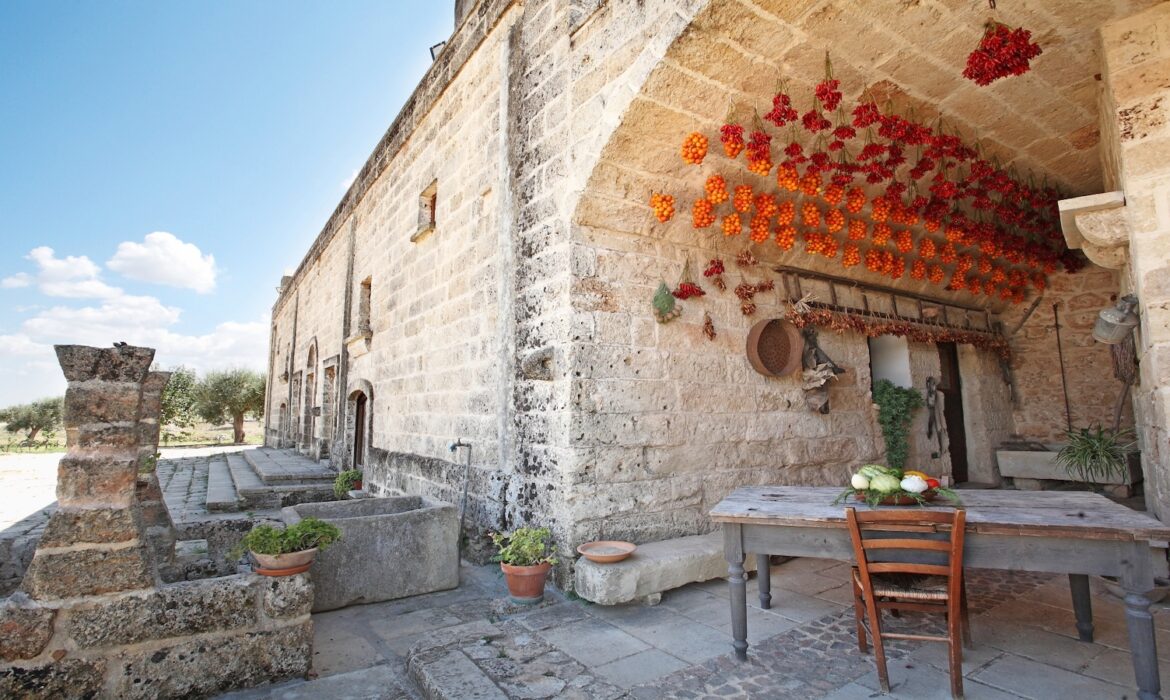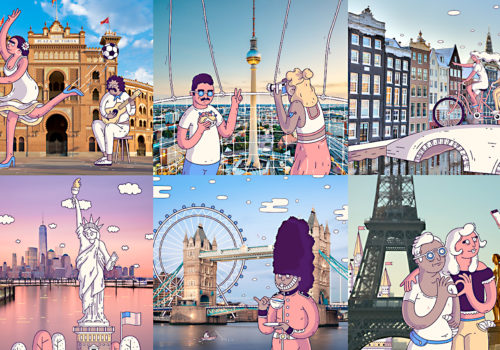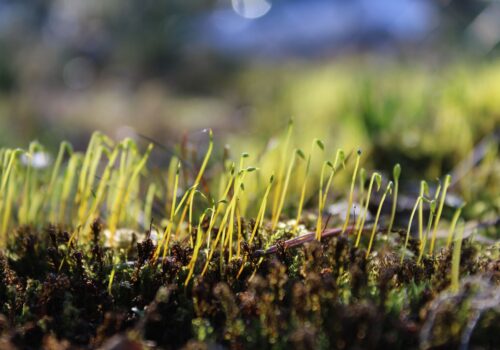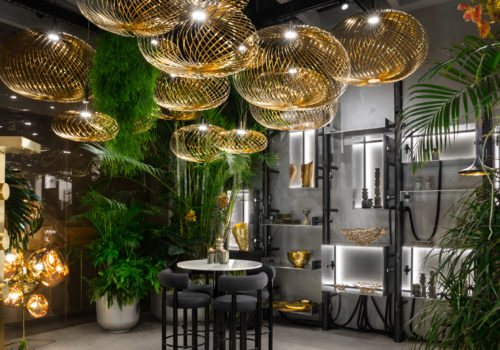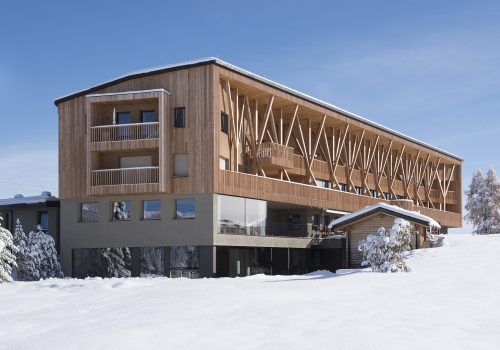Beyond the trulli in Alberobello, the streets of Old Town Bari and the churches of Lecce, a region to rediscover
Following our visits to Valle d’Aosta and Emilia Romagna, Pantografo continues its journey through the Italian heritage, heading south to discover the Apulia region. A land of great beauty, from the sea to the countryside, with its centuries-old oak trees and robust olive trees, from the tall rocky cliffs to the white beaches, from the small pristine towns of the Salento to the Baroque architecture of Lecce, to the fortified castles of the Borboun reign and the splendid country farms. There are many well-mapped roads to be found in the invaluable guidebooks published by the Regional Tourist Agency.
We start by circumnavigating the Gargano, now a National Park, heading in the direction of the “boot’s heel”. This territory is quite varied: from the cliffs towering over the sea to the forests of the mainland. The City of Mattinata offers a view over the sea stacks of Baia delle Zagare, while from Vieste the view opens out onto the monolith of Pizzomunno: two sights not to be missed.
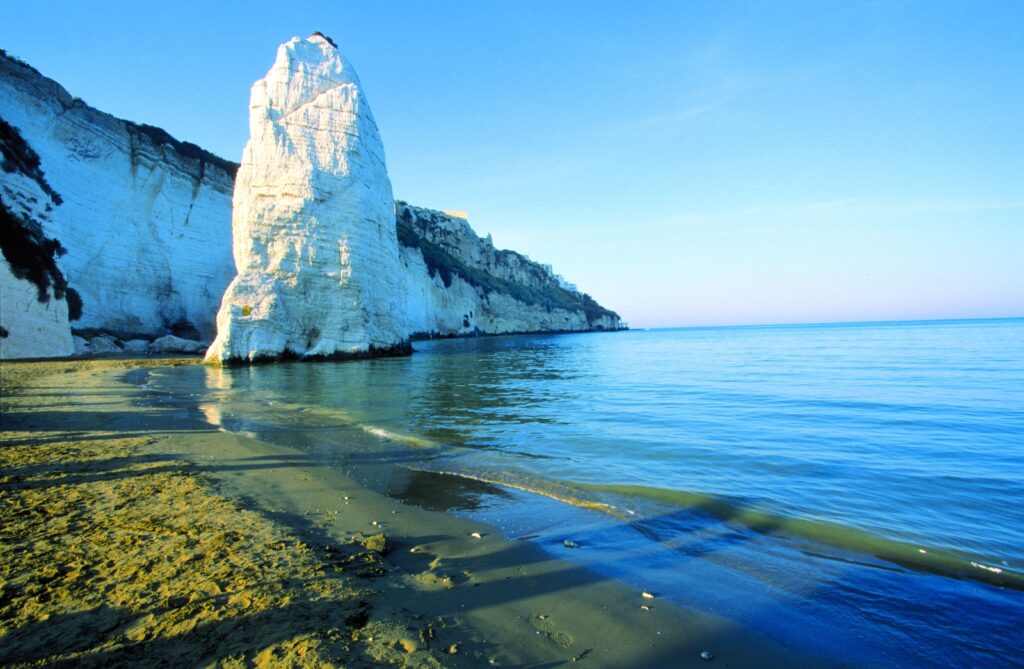
Monolite del Pizzomunno, Vieste. Ph. © Carlos Solito. Courtesy: Agenzia Regionale del Turismo “PUGLIAPROMOZIONE”
Along the coast between Vieste and Peschici you can admire the typical trabucchi, ancient structures that made it possible to fish along the rocky coast without having to leaving the mainland, especially when the seas were rough. There are restaurants in some of them today. From Rodi Garganico, famous for its citrus fruit and for the traditional “Femminello” lemon, you can see the Tremiti Islands, in particular in crisp weather, when the skies are clear.
Leaving the sea and heading inland, nature becomes wilder and the roads more difficult (especially if you are traveling by bicycle). But it is worth the trouble to see the Foresta Umbra, a name that derives from the thick vegetation that provides its shade, the Convent of San Matteo, one of the oldest in the Apulia region, and the Sanctuary of San Michele Arcangelo, a World Heritage Site. When you reach this point, our advice is restore your energy (and delight your palate) with the typical products and cuisine of this area.
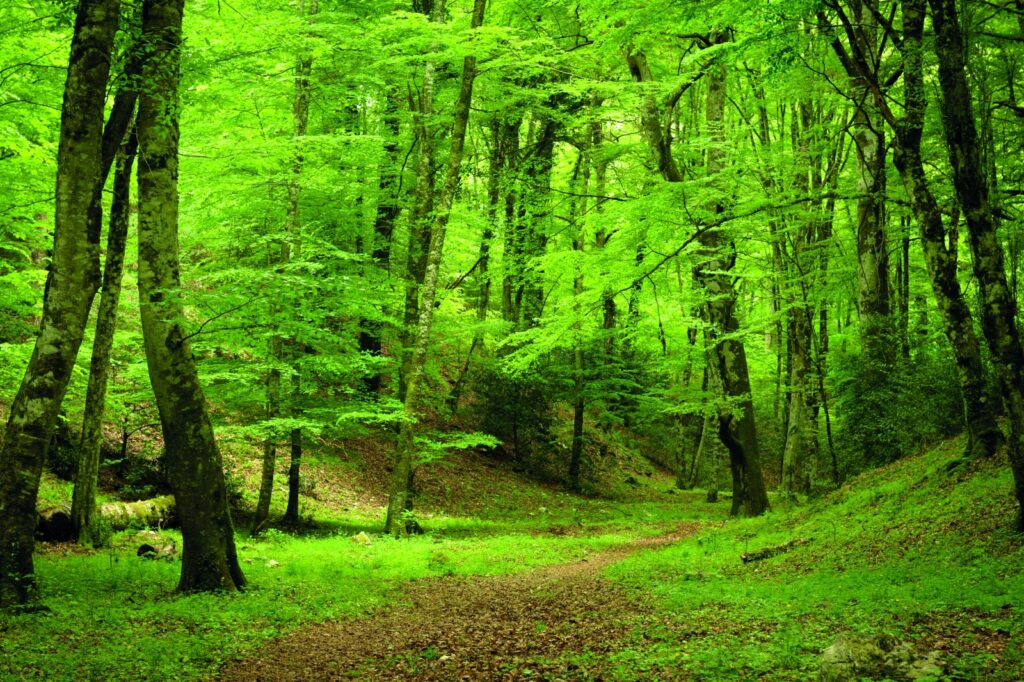
Foresta Umbra, Foggia. Ph. © Vanda Biffani. Courtesy: Agenzia Regionale del Turismo “PUGLIAPROMOZIONE”
At the start of your walk, to keep light but hydrated at the same time, fresh-squeezed citrus juice is undoubtedly the thing. For a snack between one stop and the next, take some “scaldatelli” with you: they are taralli biscuits, originally from the Foggia area, and made with wheat flour, extra-virgin olive oil, wine and fennel seeds.
At the end of your tour, you can refresh the body and the spirit with an excellent slice of cheese, the caciocavallo podolico from the Gargano area, and with acquasala fredda, a typical dish from this area made with carosello, a sort of cucumber, onion, salt, water, oil and a pinch of Gargano oregano and Monte Sant’Angelo bread. We continue our exploration of the area along the slopes of the Gargano, with the stone grottoes of Apricena, the Alto Tavoliere delle Puglie plain and Bovino, considered “one of the most beautiful towns in Italy” by the association that promotes small towns with notable historic and artistic value. Along the way, don’t forget to have a sip of the “Nero” di Troia wine, accompanied perhaps by a snack of prosciutto crudo from Faeto and Cerignola olives.
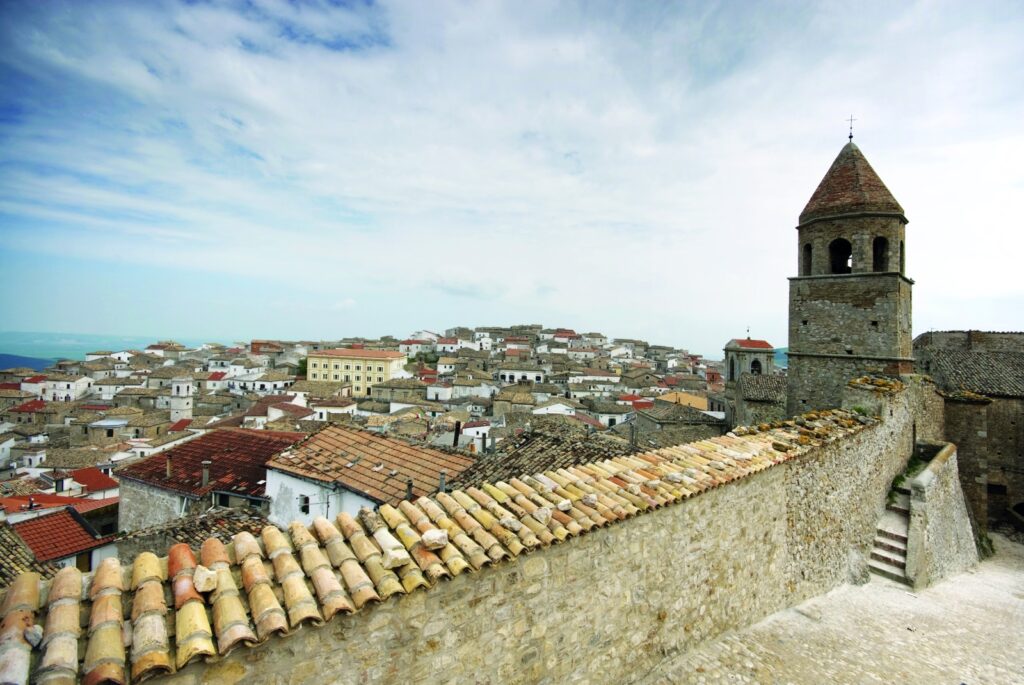
Panorama di Bovino. Ph. © Aldo Pavan. Courtesy: Agenzia Regionale del Turismo “PUGLIAPROMOZIONE”
If you are a fan of contemporary architecture, then two interesting destinations are San Severo and Orsara, where many works by Raimondo Guidacci, an architect born in Apulia but based in Turin, are concentrated. In particular, Pantografo would like to point out the “Casa d’angolo”, the “Corner house” in San Severo, between Via Colombo and Via Balbo, and the two twin houses in Orsara, the first in Via Trento, the second in Via Cadorna. Both projects appear as elements grafted onto the town to prompt considerations on the coexistence of memory and the languages of the contemporary era.
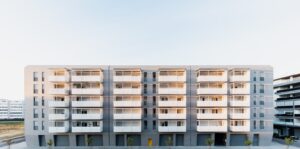
Affordable Housing, Barletta, viale Giulini. Project by Alvisi Kirimoto. Ph. © Marco Cappelletti
The journey continues along the coast of Apulia, from the Adriatic to the Ionian seas. The starting point is at the largest salt mines in Europe, located inside the nature reserve of Santa Margherita di Savoia, known as a concentrate of biodiversity. This, for example, has become a home for flamingos. And again, for fans of contemporary architecture, it might be a good idea to stop in Barletta, where you can observe one of the finest examples of public housing in Southern Italy. It is located in Viale Giulini and was designed by the architectural firm of Alvisi Kirimoto, 50% of which is native to Apulia. The building, subdued and linear, seeks to introduce a clean and orderly mark into the urban context. Before leaving the city, the castle at Barletta is also worth a visit.
The next stop is Trani, where you will be dazzled by the candour of the Cathedral of San Nicola Pellegrino, an example of Apulian Romanesque architecture. For those who wish to enjoy the beauty of coastal towns, in the area you might see Bisceglie, Molfetta and Giovinazzo
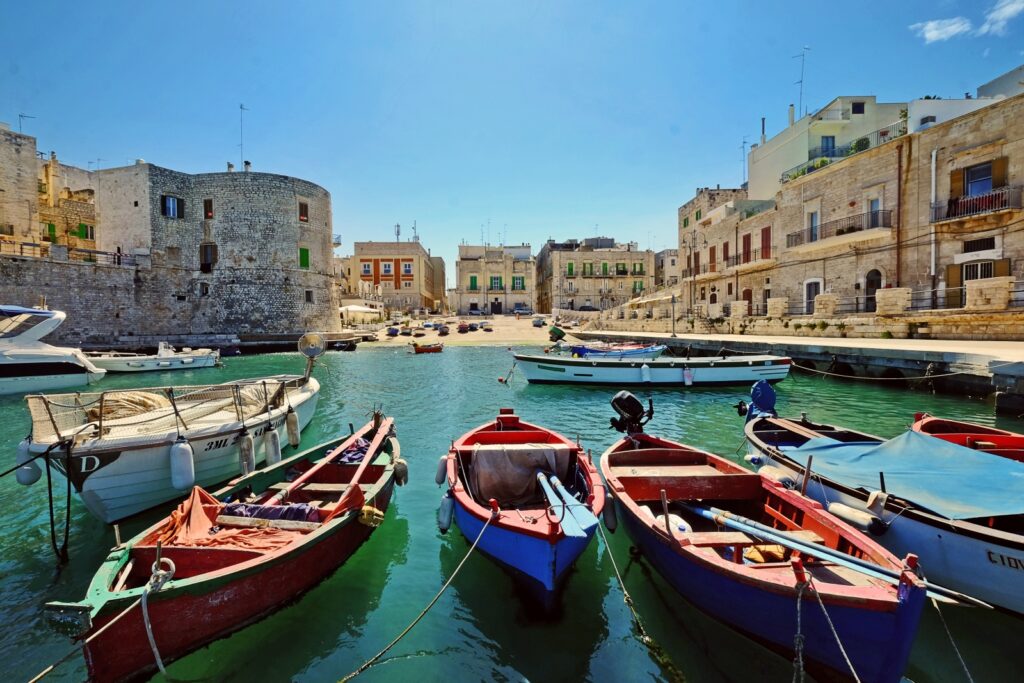
Giovinazzo. Courtesy: Agenzia Regionale del Turismo “PUGLIAPROMOZIONE”
At this point, you must be hungry: head out to Bari Vecchia – Old Town Bari – one of the most suggestive areas of the city, and taste the typical focaccia bread from Apulia, or the panzerotto with turnip greens and home-made orecchiette.
If you wish to leave the coast and explore the Bari’s inland, the first thing you should do is buy some of the typical local “ferrovia” cherries. Then move on towards the historic town of Conversano, to the Caves of Castellana with their speleological complex, to Alberobello and its trulli, a World Heritage Site. Returning along the coast, you should definitely pay a visit to the historic city of Polignano a Mare, which rises along a promontory overlooking the Adriatic Sea. The waters are exceptionally clear and will become even more transparent as you move further south.

Alberobello. © Courtesy: Agenzia Regionale del Turismo “PUGLIAPROMOZIONE”
There are many more places to stop and visit, because this territory is strewn with beautiful towns and seductive beaches. We highly recommend a visit to the picturesque port of Monopoli with its colourful boats, the gozzi, and a swim in the limpid waters of Capitolo; enjoy a plate of sea urchins at Savelletri and a walk through Ostuni, known as the white city for its characteristic city centre, painted entirely with lime.
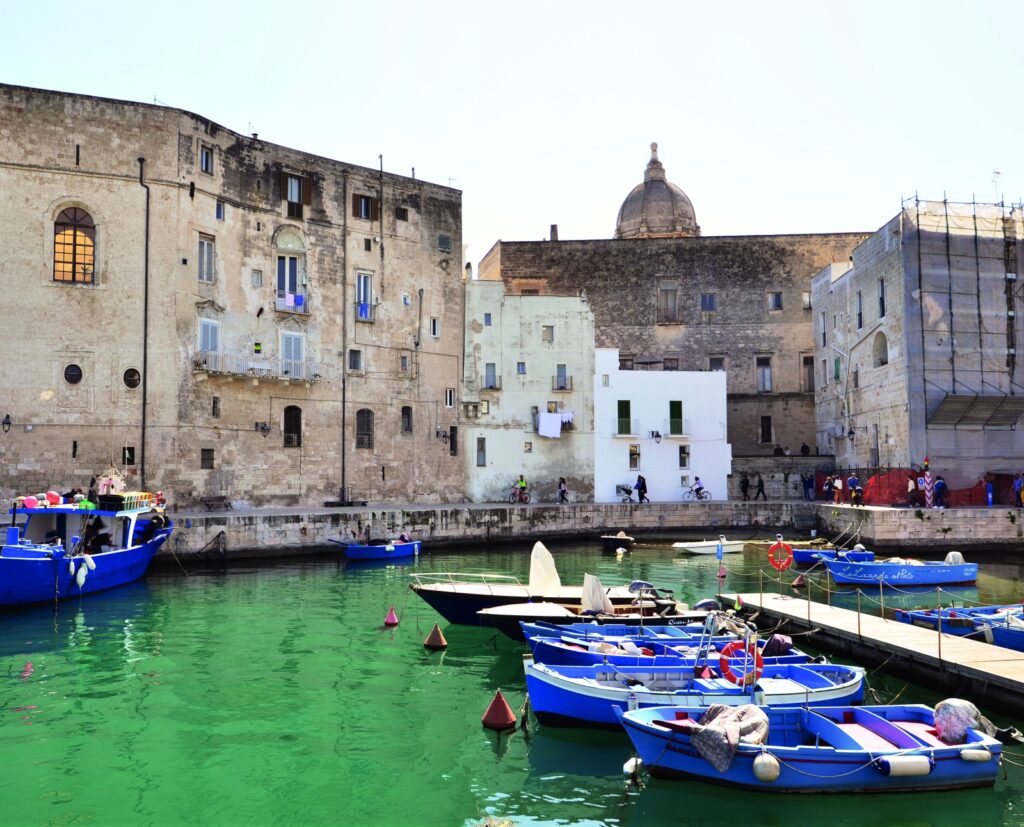
Monopoli. © Courtesy: Agenzia Regionale del Turismo “PUGLIAPROMOZIONE”
From Ostuni, you can decide whether to travel further inland to visit Martina Franca, for example, or Locorotondo, Gioia del Colle and Altamura, ideal locations to try some excellent bread and delicious mozzarella cheese, or continue along the coast to Lecce, the city that is the symbol of Apulian Baroque architecture, where it is worth staying for a few days.
As you leave Lecce, about 12 km away is the ancient fortified town of Acaya, with the castle which dates back to the early 1500s. At this point, especially in the spring or when the season is not as crowded, don’t miss the beaches of San Foca or Torre dell’Orso: here the crystalline waters of the sea will leave you breathless. Between the two sites stands the extraordinary Grotta della Poesia, the Cave of Poetry.
Travelling further past Otranto, you will reach Santa Maria de Leuca, where the Adriatic Sea meets the Ionian sea. Moving up the Ionian coast, just barely inland, you will find Nardò, another jewel of Lecce’s Baroque architecture. Before reaching the Gulf of Taranto, where you can enjoy a meal of excellent mussels, we suggest you take a walk around the farmhouses near Crispiano (some of which have become hotel structures) and a visit to the “Terre delle Gravine” Nature Park.
After this journey, having filled your eyes and your heart with beauty, you will probably have put on some weight, but don’t worry because for your next trip Pantografo has a destination in mind where, despite its many delicious specialities, Alpine excursions and rock-climbing will help keep the calories and fats at arm’s length.
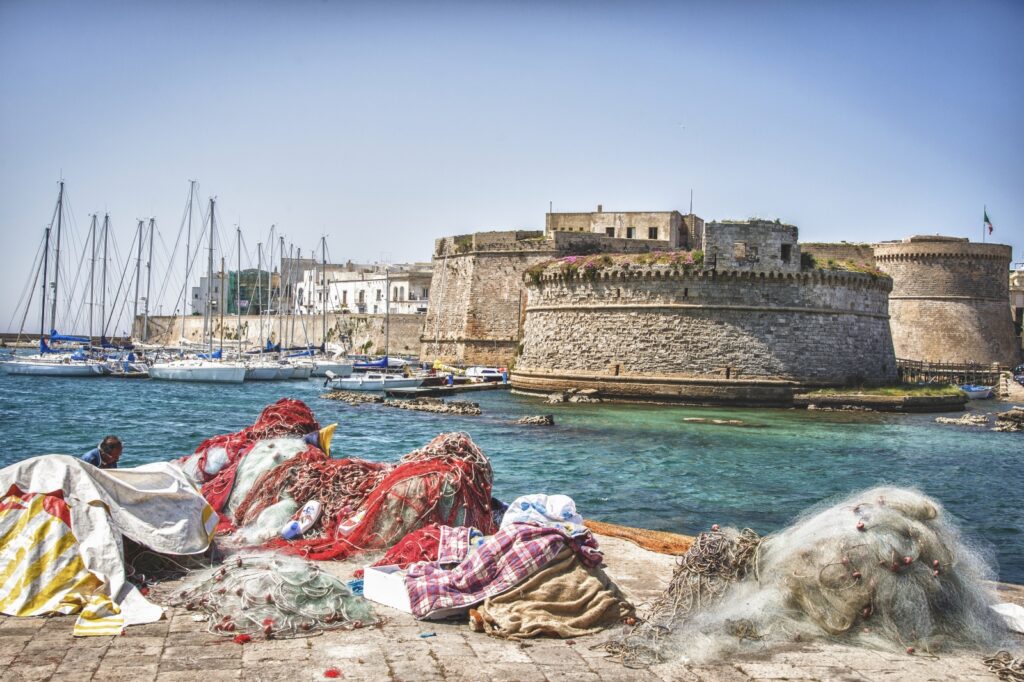
Castello di Gallipoli. Ph. © Leonardo D’Angelo. Courtesy: Agenzia Regionale del Turismo “PUGLIAPROMOZIONE”
In copertina: Le Stanzie, Supersano (Lecce). Ph. courtesy © Agenzia Regionale del Turismo “PUGLIAPROMOZIONE”
Translated by Olga Barmine
© ALL RIGHTS RESERVED


